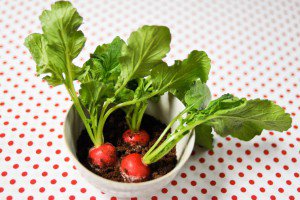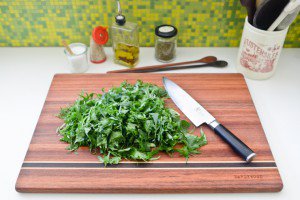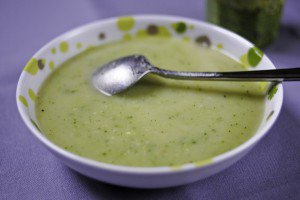In ELLE à table, a French cooking magazine I contribute to, one of the longest-running sections is one called La Cuisine du placard (literally, cuisine from the cabinet or cupboard) that presents a picture of common pantry items, and offers recipes that make use of those, requiring as little fresh shopping as possible.
I consider myself a fresh ingredient cook, chiefly inspired by seasonal produce and market stalls, yet I get a special kind of kick from my occasional forays into the realm of pantry cooking: there is something curiously satisfying about using up supplies in ingenious ways, and a kind of primal gratification to be drawn from cooking in survival mode, even if the kind of ordeal you’re surviving through is just an empty-fridge Thursday night.
And now it’s almost 2pm and everybody’s hungry and clearly that food shopping expedition is not going to happen, but you should be able to scrape together some sort of a meal if you rummage through the kitchen cabinets long enough.
This pasta dish is the latest of my serendipitous cuisine du placard discoveries. I first made it for a late lunch a few weeks ago, on one of those weekend days when you know you should have gone out to shop for food in the morning, but you decided to laze around instead, and now it’s almost 2pm and everybody’s hungry and clearly that food shopping expedition is not going to happen, but you should be able to scrape together some sort of a meal if you rummage through the kitchen cabinets long enough.
In this instance, the three items that clicked were: a package of semi whole wheat spaghetti, a small carton of organic tomato coulis, and a can of sardines from Brittany. The former dived into a pot of boiling water, while the latter two joined a sliced shallot — I always have onions and shallots on hand, but you could omit that if you don’t — and a little cumin in the skillet, where they formed a deeply tasty, surprisingly complex, and very satisfying sauce.
I’ve made it again several times since then, even on days when there was fresh produce in the fridge but I wanted something quick and easy, and it always feels like a treat, so now I make sure I keep those ingredients on hand for emergency needs of tomato sardine spaghetti.
And of course, I’m curious: will you share your own favorite pantry cooking dish, and the ingredients you stock to prepare it?

Have you tried this? Share your pics on Instagram!
Please tag your pictures with #cnzrecipes. I'll share my favorites!
Ingredients
- 1 can (135 g or 4.5 oz net weight) good-quality sardines packed in olive oil
- 1 large shallot or small onion, about 100 grams (3.5 ounces), thinly sliced
- fine sea salt
- 1/2 teaspoon whole cumin seeds
- 250 ml (1 cup) good-quality tomato coulis or canned cherry tomatoes (not tomato paste or concentrate, see note)
- hot sauce or chili purée, to taste (optional)
- coarse sea salt
- 200 grams (7 ounces) spaghetti (I like to get spelt or semi whole wheat spaghetti)
- freshly ground black pepper
- fresh flat-leaf parsley, leaves coarsely chopped (optional)
Instructions
- Scoop a little oil from the sardine can into a medium skillet and place over medium heat. Add the sliced shallot, sprinkle with a pinch of fine sea salt, and cook for 2-3 minutes, stirring regularly, until softened. Add the cumin and cook for a minute, until fragrant.
- Add the tomato coulis and drained sardines. Crush the flesh of the sardines into the coulis with the back of a fork, add hot sauce to taste, and stir well. Simmer over medium-low heat for about 5 minutes, stirring regularly. Taste and adjust the seasoning.
- While you're making the sauce, bring salted water to the boil in a medium saucepan. Add the spaghetti and cook until just al dente. Five minutes before the spaghetti is cooked, scoop a little of the boiling water into two pasta bowls to preheat. When the spaghetti is cooked, drain and add to the skillet, and stir to coat thoroughly with the sauce.
- Pour out the water from the pasta bowls, and divide the pasta between them. Sprinkle with black pepper and parsley if you have it, and serve immediately.
Notes
Avoid cans that have a white lining on the inside: it is likely to contain BPA that may leach into the food, especially if it's acidic like tomatoes. Unfortunately, there is no way to know until you've opened the can, but you can make a note to try a different brand the next time.














